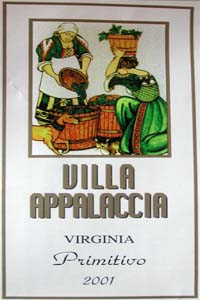 |
|
Wine Details
Price:
$17.00 per bottle
Description:
PRIMITIVO is our most prized posession, being to date, the only significant East Coast planting of this Southern Italian variety. Recently identified as a "twin" of Zinfandel, Primitivo in our vineyard, produces the most amazing Italian red food wine. A rare combination of balanced acidity, tannins and fruit in the absence of oak. This is a wine that takes some time to mature in the bottle and will make a fine wine to cellar. Although closely related to Zinfandel, growing in Virginia it takes on the very Italian character of this grape and is not to be mistaken for a West Coast wine. It is very difficult to grow because of the tendency to burst following rain. In spite of this, we have committed 25% of our vineyard to this great variety.
|
|
|